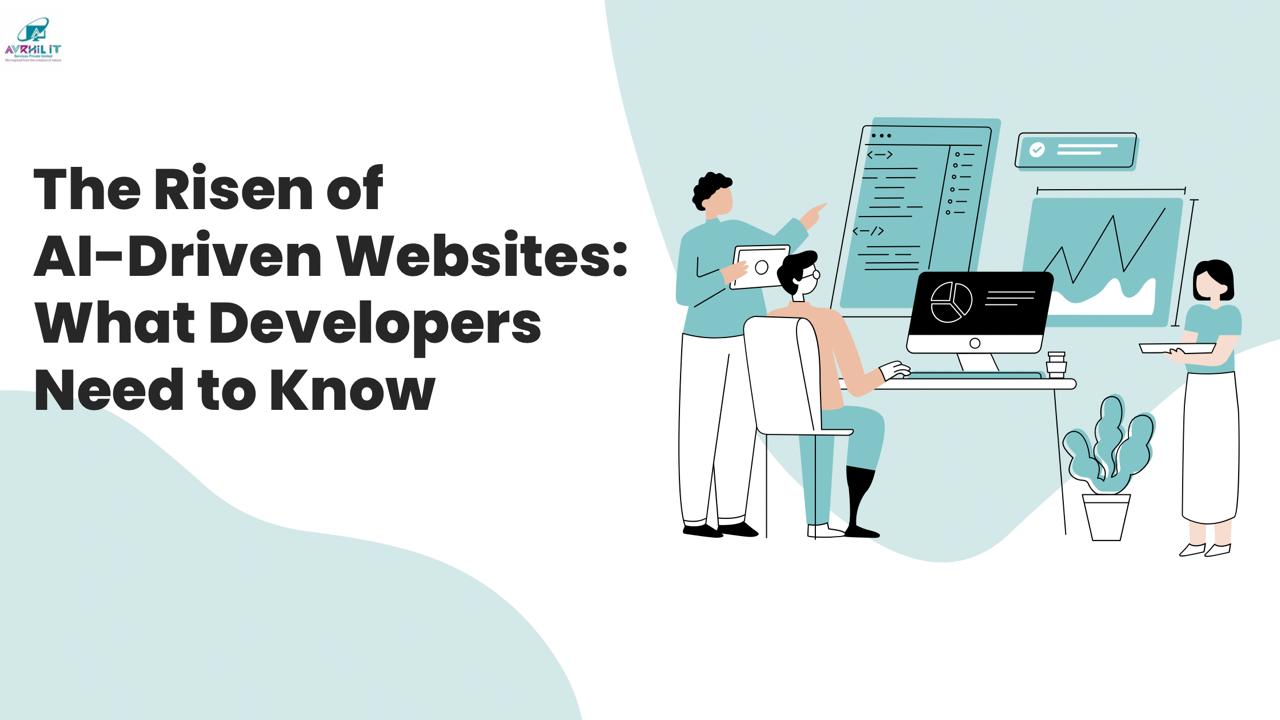
The Rise of AI-Driven Websites: What Developers Need to Know
The world of website development is evolving fast — andartificial intelligence(AI) is at the heart of this revolution. From AI-powered design assistants to personalized content delivery and advanced analytics, AI-driven websites are quickly becoming the new standard. For developers, this shift brings both exciting opportunities and complex challenges.
So, what exactly are AI-driven websites, and how can developers stay ahead of the curve? Let’s dive in.
What Are AI-Driven Websites?
An AI-driven website uses artificial intelligence technologies like machine learning, natural language processing, and predictive analytics to improve functionality, design, and user engagement. These sites are dynamic, learning from user behavior and continuously adapting to provide better experiences.
Examples include:
Personalized content recommendations
AI-powered chatbots for real-time support
Automated design tools that adapt layouts and colors based on user behavior
Voice-search optimization and conversational interfaces
Why AI Matters in Modern Web Development
Traditional websites are mostly static and rule-based. But today’s users expect smart, personalized, and fast digital experiences. Here’s where AI comes in:
Personalization at scale – Serve custom content, products, or layouts to individual users.
Faster development cycles – Use AI-powered tools for coding, testing, and deployment.
Improved UX – Analyze user behavior to dynamically improve navigation and design.
Better SEO – AI tools help optimize content for search engines in real-time.
Predictive features – Use behavioral data to suggest products or content before users search.
Top AI Tools for Web Developers
Staying ahead means knowing which AIweb development tools to leverage. Some popular choices include:
ChatGPT API / OpenAI tools – For chatbots, content creation, and natural language interfaces
Figma + AI Plugins – For smart UI design suggestions
Framer AI – AI-based website builder for quick prototyping
Wix ADI – Wix’s Artificial Design Intelligence tool for building basic sites quickly
Adobe Sensei – AI enhancements for design and creative workflows
Skills Developers Need for AI-Powered Web Projects
To thrive in AI-driven environments, developers should explore:
Basic machine learning concepts
Data handling and analysis (e.g., Python, TensorFlow basics)
Integrating AI APIs (like OpenAI, Google Cloud AI, Microsoft Azure AI)
Understanding ethical AI and data privacy
Optimizing front-end performance for dynamic AI-generated content
Real-World Examples of AI-Driven Websites
Netflix – Uses predictive algorithms to suggest shows and optimize streaming quality
Amazon – AI recommends products, adjusts pricing, and customizes search results
Spotify – Employs machine learning for playlist personalization and music discovery
Airbnb – Uses AI to optimize search results and price listings
These platforms demonstrate the powerful impact of intelligent websites in boosting user engagement and conversion.
The Future of AI in Web Development
By 2030, it’s estimated that over 80% of websites will use some form of AI. Developers who master these tools now will be in high demand as businesses seek to automate, personalize, and optimize their digital presence.
Expect more no-code and low-code AI platforms, greater reliance on real-time data, and new user interfaces like voice, gesture, and augmented reality.
Final Thoughts
The rise of AI in web development isn’t a trend — it’s the future. For developers, embracing this shift means learning how to integrate AI tools, adapt to intelligent user behavior, and deliver next-gen digital experiences.
Start small — experiment with AI APIs, build smart features, and stay updated. The AI-driven web is here, and those who learn to build it will shape what comes next.


